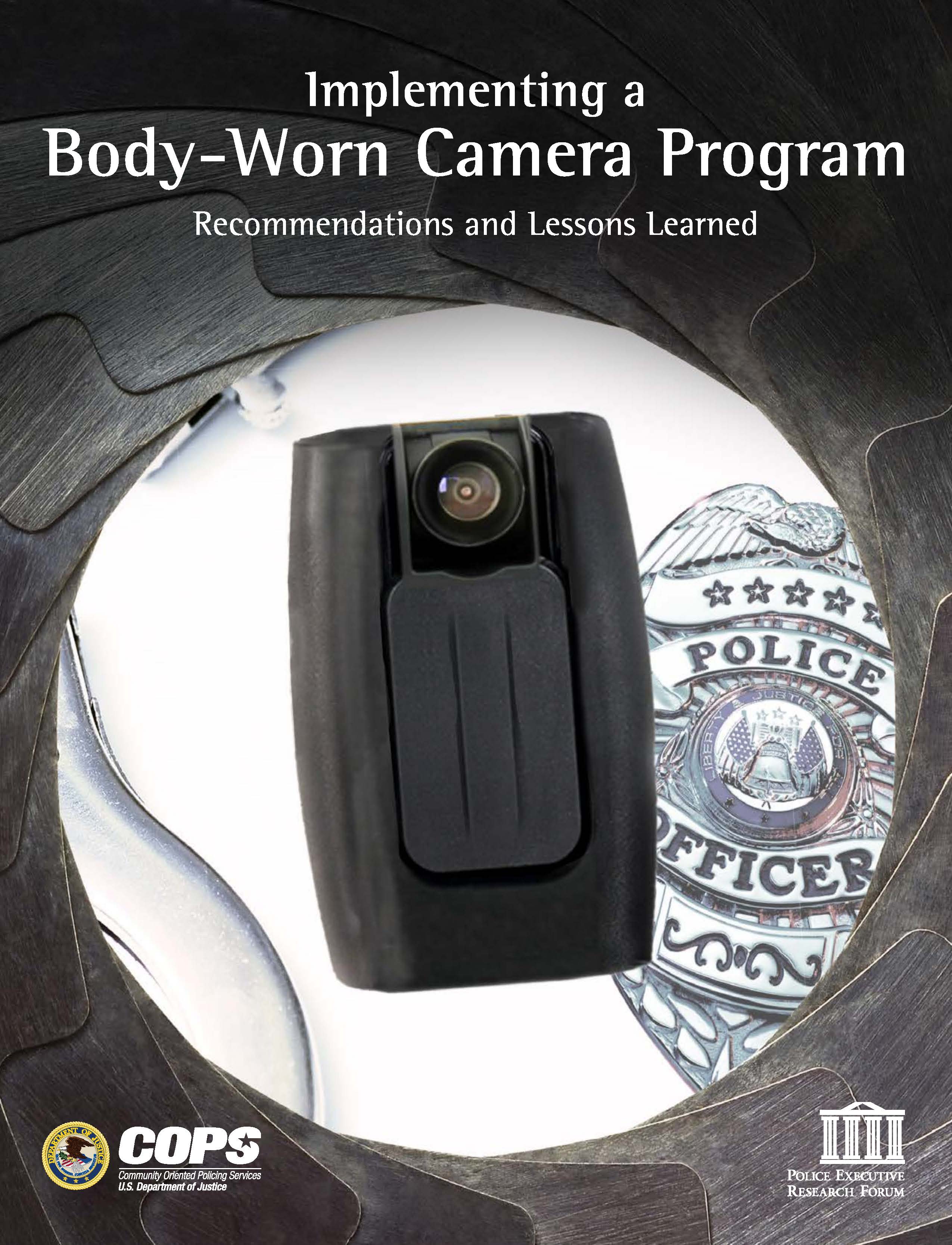|
April 29, 2023 What have we learned about body-worn camera policy?
PERF members, Policing has been fundamentally changed by videos from police cameras and community members’ cellphones. When a controversial incident receives national attention, invariably it is because there is video footage spotlighting police officers’ actions – how they treat members of the community, how they conduct traffic stops, how they interact with victims, and, most importantly, how they use force. These videos and the subsequent public attention have resulted in significant policy changes. 
Ten years ago, the COPS Office asked PERF to develop guidelines on police use of body-worn cameras. At the time, cameras were a relatively new technology, and there was both curiosity and anxiety about how they would be received by officers in the field. Many unions and officers were apprehensive about what they saw as an invasion of privacy. But community members had cellphone cameras, and policing needed to catch up. In the ten years since, many more police departments and sheriffs’ offices have started body-worn camera programs, and for most cops, it’s now an integral piece of equipment. Agencies have had the opportunity to try out a range of policies and practices. On June 29, PERF will convene a meeting in Washington, DC to find out what the field has learned over the past ten years. We’ll address a range of issues, including:
One very timely issue we’ll discuss on June 29 is whether officers should be allowed to review body-worn camera footage of a critical incident before writing a report. This was particularly contentious ten years ago, and it remains controversial today. Our 2014 guidelines stated that “officers should be permitted to review video footage of an incident in which they were involved, prior to making a statement about the incident.” We felt that camera footage, much like written notes, could help officers more accurately document what took place. But there were also strong arguments against that position. Some felt that a report should reflect an officer’s perceptions at the time of the incident, and reviewing camera footage would lead them to write down what they saw on video rather than what they perceived during the incident. Recently, this issue was a significant holdup in negotiations between the city of Portland, Oregon and its police union over adoption of a body camera program, which is a requirement of the city’s settlement agreement with the U.S. Department of Justice. Union officials wanted officers to be able to review footage before writing a report, while the city wanted officers to write a report before viewing the footage. Last week the two sides agreed on a compromise plan, which the City Council has now approved. The agreement treats cases involving a death differently than other uses of force. For the lowest-level uses of force, the officer “shall provide a full and candid account of the facts and circumstances of the event, not recorded on BWC, to the supervisor at the scene” before viewing their camera footage; then the officer can view the footage before writing a report. The policy is similar for more serious uses of force that do not involve a death, but officers’ initial statements to supervisors will be recorded. For cases involving a death, the involved officer will provide an initial recorded statement to a supervisor, then will be interviewed by internal affairs investigators within 48 hours. The officer will make a statement to the investigators before either party has viewed the officer’s body-worn camera footage. Following that initial statement, both parties will view the footage; then the officer will make another statement to the internal affairs investigators. The Department of Justice initially said that officers should not be allowed to view footage of use-of-force incidents before writing their reports, but DOJ has tentatively agreed to the compromise plan. I know many still have strong feelings on both sides of this issue. Like every issue PERF tackles, reaching consensus will be challenging. But we can draw on ten years of experience to determine how that policy has worked and whether any adjustments are needed. In some jurisdictions, another key issue is whether supervisors are allowed to review officers’ footage to evaluate their performance. During my recent “Monday-morning quarterbacking” sessions with several agencies across the country, some police leaders said agreements negotiated with their unions have limited their ability to review body-worn camera footage. While I understand why officers may not want to feel that they’re being constantly monitored by supervisors, camera footage can be an important tool for improving officer performance and highlighting exemplary work. I hope we can discuss the reasons that unions push for these measures, and what agencies may be missing if they can’t review footage. I know you all have the extensive experience needed to explore these and related questions. We plan to involve a range of participants in our meeting – large and small agencies, sheriffs’ offices, researchers, and policymakers – to help us understand what the field has learned in the past decade. Look for more details on this meeting in the coming weeks. I hope you can join us on June 29! Best, Chuck |
